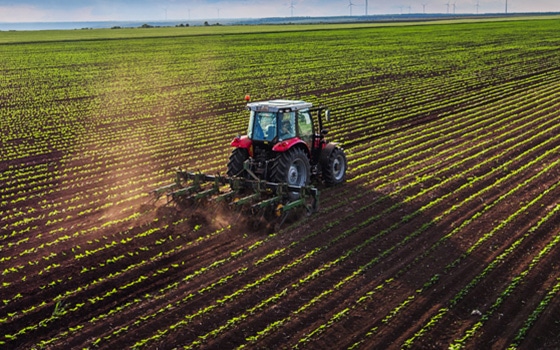-
InsightsInsight - Agriculture and Rural - POSTED: June 29 2015
Bet on land – prime location investment
Although “super-prime” Central London properties may regularly garner the lion’s share of UK press commentary for rocketing returns and price rises, there is another market which has seen huge increases over the last decade – agricultural land. Over this period prices have grown at twice the rate of prime London property.
- Share this article
- Print this article
-
-
Although “super-prime” Central London properties may regularly garner the lion’s share of UK press commentary for rocketing returns and price rises, there is another market which has seen huge increases over the last decade – agricultural land. Over this period prices have grown at twice the rate of prime London property.
Savills has recently estimated that good agricultural land has increased 270% in value over the last decade, compared with 135% rise for London houses during that time. It estimates that farmland has also beaten the FTSE All-Share index and even gold.
High profile buyers in the UK have included Sir James Dyson, the billionaire inventor as well as the Wellcome Trust, which last year bought 40,000 acres from the Co-Operative Group, marking the largest farm sale for over two decades. Many see farmland in a similar vein to gold – as a safe haven which has tended to be counter-cyclical to the rest of the economy.
Another important factor behind this meteoric rise has been the limited supply of high quality land, with estimates suggesting that in 2000 300,000 acres were on the published market, which dropped to fewer than 150,000 in 2013, which is less than 0.5%. The UK agricultural market is evolving which makes it even more necessary for farm owners to increase the size of their estates – at Brachers we estimate that one family may need at least 1,000 acres to ensure an arable farm remains competitive.
Choices for farm owners looking to expand are limited, as many will look to buy available land off adjoining properties.
This naturally puts a premium on the land and the neighbouring landowner may well be able to sell the land for much more than it’s worth, simply due to its location.
Globally, a broader swathe of investors such as private equity houses, investment banks, pension funds, hedge funds and oligarchs are allocating an increasing share of their portfolios into farm land.
Sub-Saharan Africa has been a very popular recent investment destination, benefitting from a low entry point as well as the opportunity to develop a large scale operation from a very early stage. Global food prices have rocketed over the last few years, and increasing wealth in frontier markets has meant changes towards more protein-based diets, ensuring ample opportunities for arable and cattle farms. Although farms in Sub-Saharan Africa will involve more risk, including potential political instability, poor access to infrastructure or irrigation as well as issues surrounding challenges to ownership, the yields can be very attractive, with investors reaping returns of 15 or 20% in some cases.
Within Europe, only Denmark and Spain have seen average farmland prices drop over the last year or two, with upticks across the rest of the EU. Over the last decade however, prices have grown across Britain, France, Italy and Germany. The Netherlands is the home of record EU farmland prices, which average 49,575 per hectare, compared to 18,962 in Britain, 19,400 in Italy and 22,267 in parts of Eastern Germany and 5,420 in France.
As one may expect, growth within the UK varies significantly between different types of farmland and regions. Larger arable farms have seen strong growth, whilst smaller livestock farms – where buildings, both part of the working farm and residential, may well account for the majority of the holding’s value – have seen far weaker growth. Analysis by Smiths Gore suggests that there is a significant variation between the marketing of farmland within the UK. The South West and East of England are the most active regions, with 19,300 acres and 18,000 acres marketed respectively this year, compared to 4,500 acres in the North East and 5,800 in the North West.
Private investors or High Net Worth individuals have been buying up UK farmland, with tax benefits seen as a contributing factor. These include generous tax breaks on inheritance and capital gains tax. Land is exempt from inheritance tax, provided it is actively farmed. Whilst capital growth for UK farms has been very positive, it must be remembered that average yields can be low (between 1 and 2%) – this may also discourage some potential investors. Although we do not expect the dramatic rises in farmland values to continue over the next decade, strong demand and limited supply of suitable farmland means that prices are likely to remain stable at the very least for the foreseeable future.
This content is correct at time of publication
Can we help?
Take a look at our Agriculture and Rural page for useful information, resources, guidance, details of our team and how we may be able to help you
-
Get in touch
Please fill out the below form or alternatively you can call us on 01622 690691
